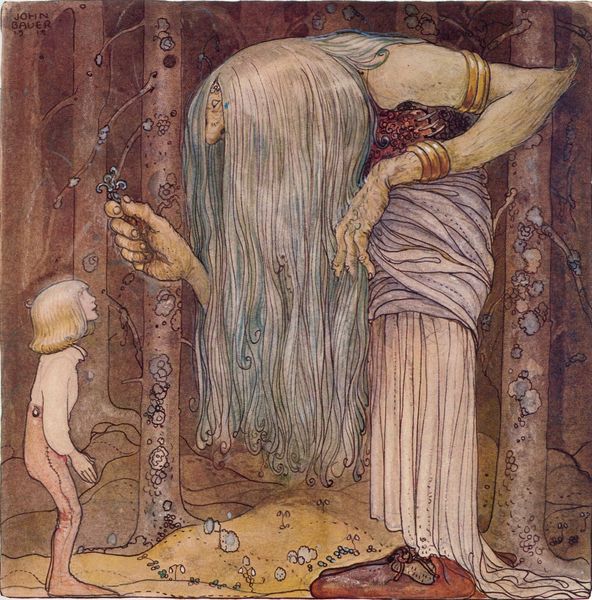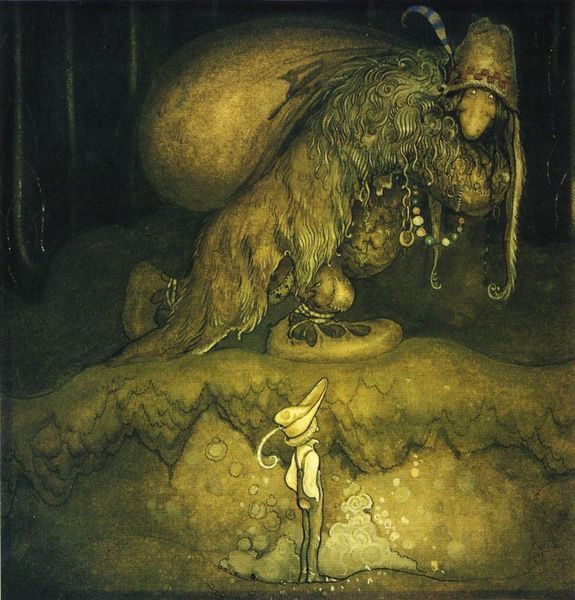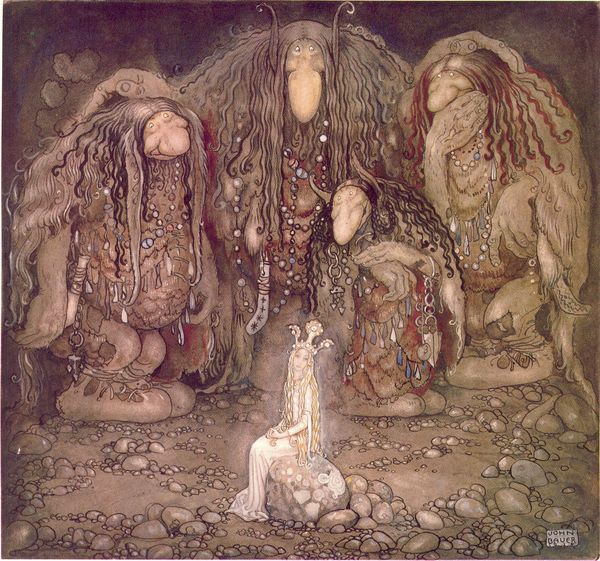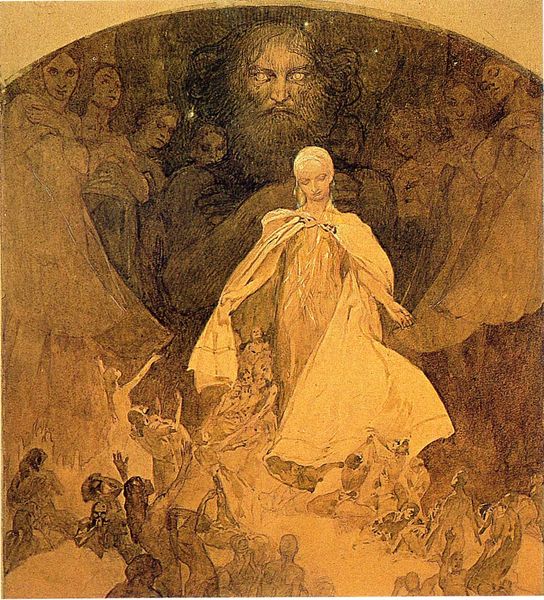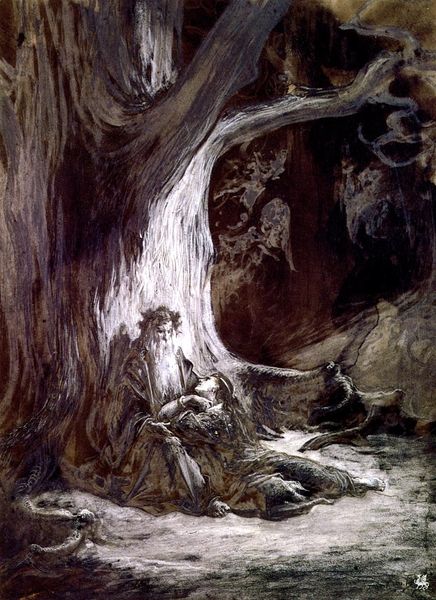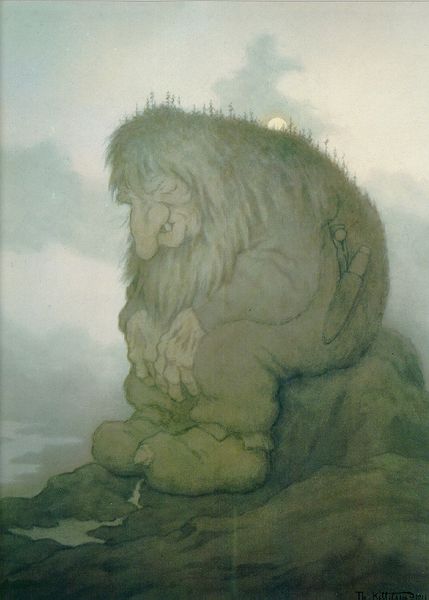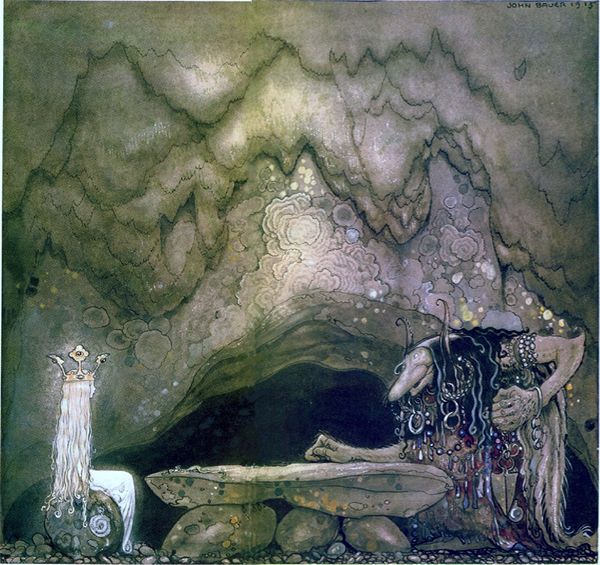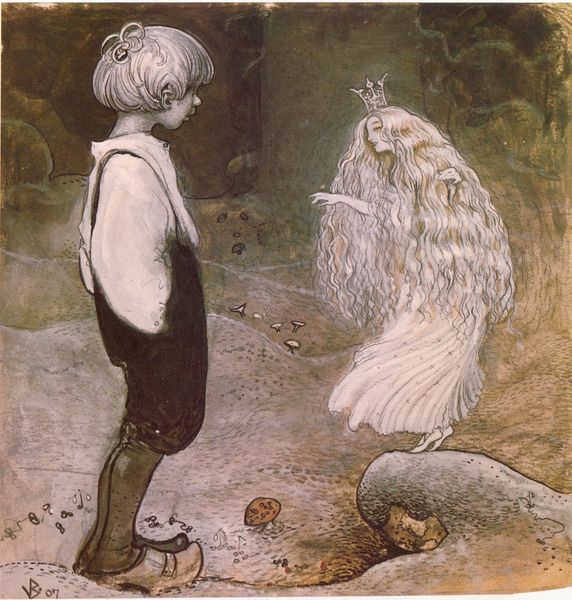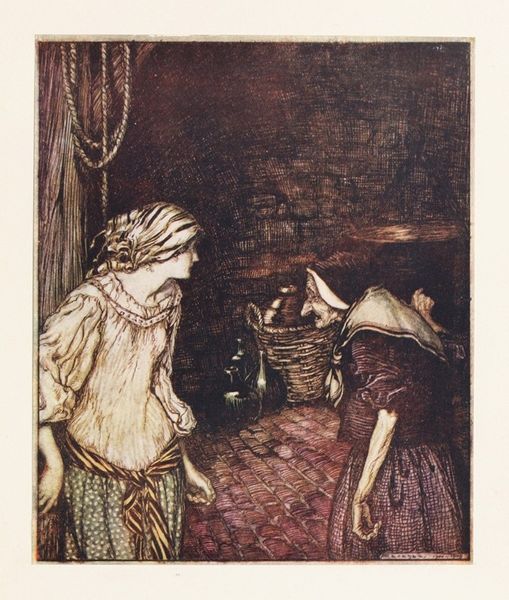
painting, watercolor
#
narrative-art
#
painting
#
landscape
#
fantasy-art
#
figuration
#
watercolor
#
folk-art
#
watercolor
Copyright: Public domain
Curator: We're looking at John Bauer's watercolor titled "The Boy Who Was Never Afraid," created in 1912. Bauer was a Swedish painter and illustrator renowned for his illustrations of fairy tales. Editor: It feels like a dream pulled straight from childhood, a little eerie, a little magical. There's this juxtaposition between the colossal troll and the tiny, almost defiant-looking boy. What's going on here? Curator: This painting illustrates a Swedish folktale. Bauer was very invested in conveying the cultural heritage, and many believe these images aimed to foster a sense of national identity amongst young Swedes. It visualizes courage in the face of the unknown, doesn't it? Editor: Absolutely. It raises questions about how we prepare children for encounters with power, especially power that looks monstrous or Other. What does fearlessness even mean in that context? Is it naiveté, a kind of privileged innocence? Curator: It’s interesting you frame it that way. One interpretation might see the boy’s size as a reflection of societal views on children: small, innocent, requiring protection. Bauer’s technique here, especially the soft washes of color, certainly invites empathy for the vulnerable figure. Editor: Yet, the composition doesn’t make him seem helpless. He’s standing his ground. His back is straight and it allows you to connect on some level. I'm stuck on the way gender plays into this; is fearlessness somehow linked to this boy's identity in a way it might not be for a girl in the same story? How does Bauer subtly influence that through the imagery? Curator: That's a worthwhile thread to pursue. The tales Bauer illustrated were didactic in purpose, frequently intended to instill specific gendered ideals and to naturalize a vision of proper social decorum for the generation that would lead the 20th century. Editor: It’s compelling how a seemingly simple illustration can reveal layers of cultural coding when you start to question the underlying assumptions. Curator: Absolutely. It serves as a powerful example of the relationship between art and cultural values at the beginning of the modern era, but it also prompts important dialogues about how visual tropes impact the social sphere in any historical context. Editor: Precisely. These kind of pieces challenge us to think critically about the narratives we inherit, what they reinforce, and what they leave out.
Comments
No comments
Be the first to comment and join the conversation on the ultimate creative platform.
